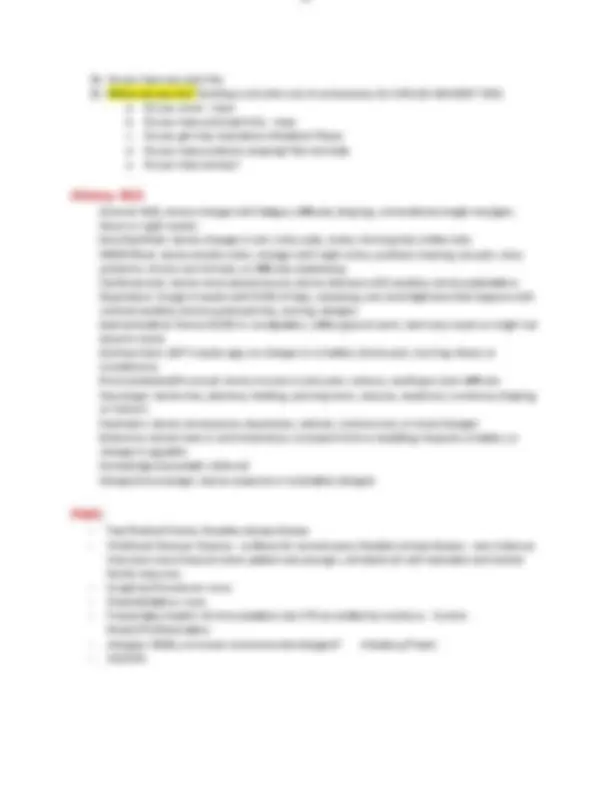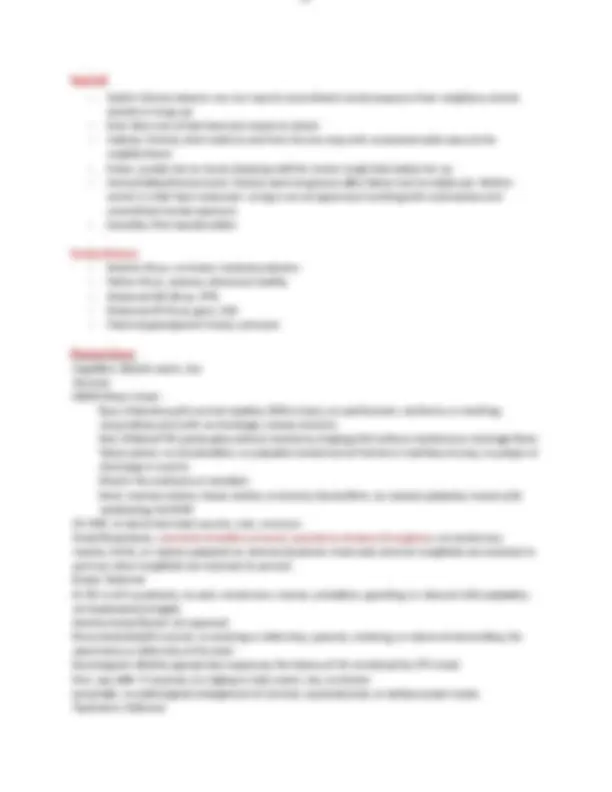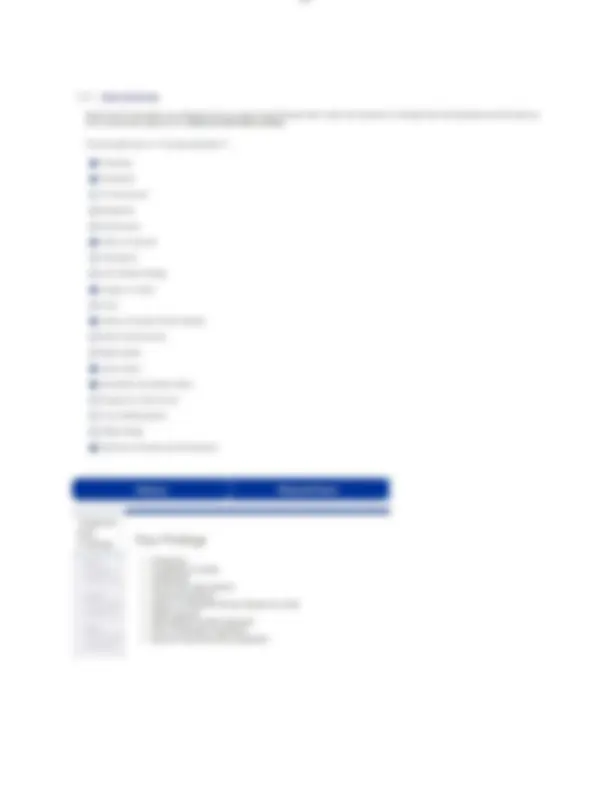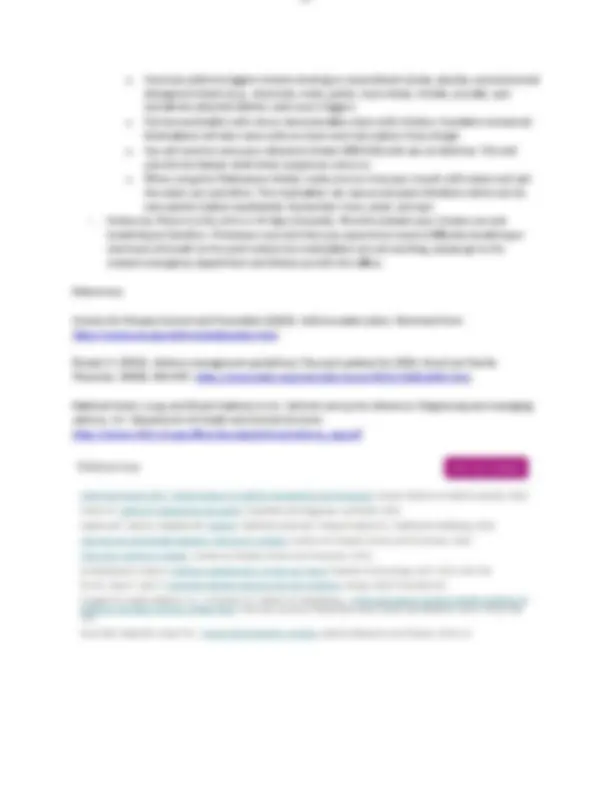Download I-HUMAN WEEK#3 NR 602 KATHLEEN HAMITON 16-YEAR-OLD WITH COUGH AND SHORTNESS OF BREATH and more Assignments Nursing in PDF only on Docsity!
I-HUMAN WEEK#3 NR 602 KATHLEEN HAMITON 16-YEAR-OLD WITH
COUGH AND SHORTNESS OF BREATH
lOMoARcPSD|461 423 41
iHuman Week 3 Case Study:
11:05 AM Katherine Harris 16 yo 5'5" 150#s BMI 24.9 HR 88 BP L 112/82 BP R 114/80 RR 26, labored SpO2 94% Reason for Encounter: Cough and ShOB History: HPI KH is a 16 yo female presenting with her mother for 3 week onset of dry cough and a 3 day onset of shortness of breath that comes on with minimal exertion. She reports the cough seems worse at night, sputum is minimal to non-existent, and she has not taken anything to treat her cough. She is unaware of sick contacts, but does live around secondhand cigarette smoke and cockroaches in the building. Questions:
- Mom - How can I help her today? She is breathless. Reminds me of when she was younger and she had reactive airway
- Patient - how can I help you today? Cough last 3 weeks which is getting worse. Also had ShOB when walking to class at school. I have to stop to take a break. Very stressed out.
- Does anything make your cough better or worse? Nothing makes it better. It has been constant, but is getting worse over the past 3 days, and worse at nights
- Are you coughing up any sputum? No
- What treatments have you had for your cough? Nothing
- Do you wheeze? I haven't heard myself wheeze, but I'm ShOB
- Mom - Does she wheeze? I remember she used to 8. 9.? No pain, but OOB
- Do you awaken at night coughing/ShOB? Yes, coughing for the last 3 days/No ShOB
- How severe is your cough? Moderate maybe
- Do you have any other symptoms or concerns we should discuss? Runny nose 3 weeks ago
- When did you first notice feeling short of breath? 3 days now
- Does anything make your ShOB better or worse? It gets a little better when I stop walking and rest. It's a little worse at night.
- Has there been any change in your ShOB over time? The last few years I have had it, but it got better after a few days so I did not get it checked. This time it's lasting longer
- Do you have allergies? Like hayfever and stuff? No
- Mom - Does she have any allergies? No medication allergies
- Are you taking any prescription medications? No 19. Are you taking any OTC or herbal medications? No
- Are your immunizations UTD? I think so.
- Mom - Are her immunizations UTD? Yes they are
- Do you now, or have you ever smoked or chewed tobacco? No
- Are you exposed to secondhand smoke? Neighbors smoke inside the building Does your chest feel tight or heavy? Yes, it feels tight Do you have any pain or other symptoms associated with your cough
Social:
- Habits: Denies tobacco use, but reports secondhand smoke exposure from neighbors; denies alcohol or drug use
- Diet: Eats a lot of fast food and snacks at school
- Activity: limited; short walks to and from the bus stop with occasional walks around the neighborhood
- Sleep: usually has no issues sleeping until the recent cough that wakes her up
- Home/Safety/Environment: Parents work long hours after father lost his stable job. Mother works in a fast food restaurant. Living in an old apartment building with cockroaches and secondhand smoke exposure
- Sexuality: Not sexually active Family History:
- Mother 42 yo, no known medical problems
- Father 42 yo, eczema; otherwise healthy
- Maternal GM 84 yo, HTN
- Maternal GF 82 yo, gout, HLD
- Paternal grandparent history unknown Physical Exam Cognitive: A&Ox4, warm, dry General: HEENT/Neck: Head - Eyes: bilateral pupils normal reactive; EOMs intact; no eyelid ptosis, erythema, or swelling; conjunctivae pink with no discharge; sclerae anicteric Ears: Bilateral TM pearly-grey without erythema, bulging; EAC without erythema or drainage Nose: Nares patent, no discoloration, no palpable tenderness at frontal or maxillary sinuses; no polyps or discharge in nostrils Mouth: No erythema or exudates Neck: trachea midline, freely mobile; no lesions; thyroid firm, no nodules palpated, moves with swallowing; full ROM CV: RRR, no abnormal heart sounds, rubs, murmurs Chest/Respiratory: subcostal retractions present; expiratory wheezes throughout; no tenderness, masses, thrills, or crepitus palpated on anterior/posterior chest wall; anterior lung fields are resonant to percuss; other lung fields are resonant to percuss Breast: Deferred GI: BS in all 4 quadrants; no pain, tenderness, masses, pulsations, guarding, or rebound with palpation; no hepatosplenomegaly Genitourinary/Rectal: not assessed Musculoskeletal/Structural: no swelling or deformity, cyanosis, clubbing, or edema of extremities; No asymmetry or deformity of the back Neurological: A&Ox4; appropriate responses; No history of HA unrelieved by OTC meds Skin: cap refill <3 seconds; no ridging in nails; warm, dry, no lesions Lymphatic: no pathological enlargement of cervical, supraclavicular, or axillary lymph nodes Psychiatric: Deferred
Diagnostic Tests Ordered:
- Peak expiratory flow rate (PEFR): FEV1 = 75% predicted, FEV1/FVC = 76% o Interpretation > Reduced FEV1 consistent with acute asthma exacerbation
- CXR PA/Lat > Pulmonary hyperinflation, normal cardiac silhouette o Interpretation > Pulmonary hyperinflation MANAGEMENT PLAN: Diagnosis #1: Acute Asthma Exacerbation
- Diagnostic Testing: Peak expiratory flow rate was consistent with acute asthma; Chest xray demonstrated pulmonary hyperinflation of lungs Medications/Treatment: o Albuterol (RESCUE) Inhaler - 90 mcg per actuation 1 - 2 puffs every 4-6 hours as needed Dispense: 1 inhaler and 1 spacer Refills: 1 o Prednisone 40 mg per day Take one (1) 20 mg tablet by mouth two times daily for 5 days Dispense: 5 tablets Refills: No refills o Fluticasone Propionate 110 mcg/puff MDI (metered dose inhaler) 2 puffs twice daily Dispense: 1 Refills: 1
- Consults/Referrals: Social Work/Care Management can help provide resources at home, such as possible air purifiers, etc.
- Patient Education: o Asthma is caused by the narrowing of airways. As they constrict, or get smaller, it becomes more difficult to breathe, causing shortness of breath, wheezing, coughing, and exertion with mild activity. Understanding the disease and how to avoid triggers can help prevent exacerbations. o We created an Asthma Action Plan for you today. Please keep this in a place that is visible and refer to it often. Learn your asthma triggers, and pay attention to your peak flow meter results. Bring this with you to the next visit, as we will likely update the plan.
o Common asthma triggers include smoking or secondhand smoke, obesity, environmental allergens/irritants (e.g., chemicals, mold, pollen, dust mites), rhinitis, sinusitis, and sometimes physical activity. Learn your triggers. o Full demonstration with return demonstration done with inhalers. Questions answered. Medications will also come with an insert and instructions if you forget. o You will need to carry your albuterol inhaler (RESCUE) with you at all times. This will provide the fastest relief when symptoms come on. o When using the Fluticasone inhaler, make sure to rinse your mouth with water and spit the water out each time. This medication can cause oral yeast infections which can be very painful (called candidiasis). Remember rinse, swish, and spit.
- Follow Up: Return to the clinic in 14 days (2 weeks). We will evaluate your inhaler use and breathing at that time. If between now and then you experience severe difficulty breathing or shortness of breath to the point where the medications are not working, please go to the nearest emergency department and follow up with this office. References: Centers for Disease Control and Prevention (2023). Asthma action plans. Retrieved from https://www.cdc.gov/asthma/actionplan.html Elward, K. (2021). Asthma management guidelines: Focused updates for 2020. American Family Physician, 104(5), 446-447. https://www.aafp.org/pubs/afp/issues/2021/1100/p446.html National Heart, Lung, and Blood Institute (n.d.). Asthma care quick reference: Diagnosing and managing asthma. U.S. Department of Health and Human Services. https://www.nhlbi.nih.gov/files/docs/guidelines/asthma_qrg.pdf
















